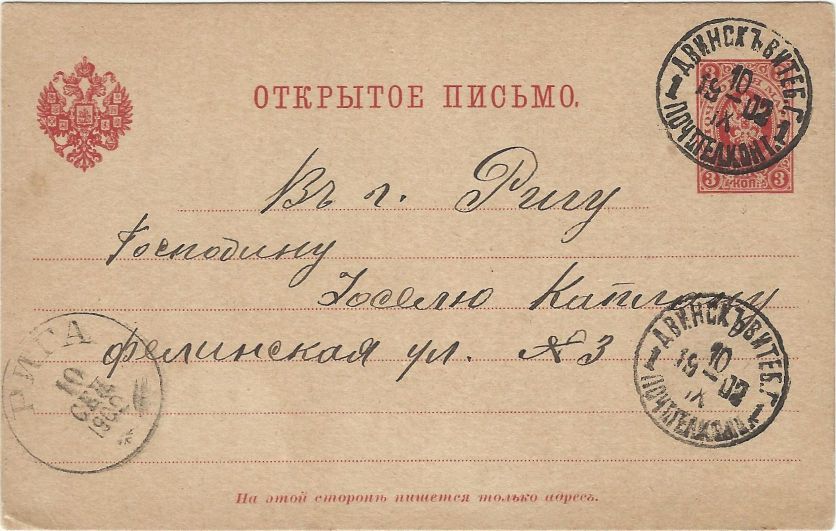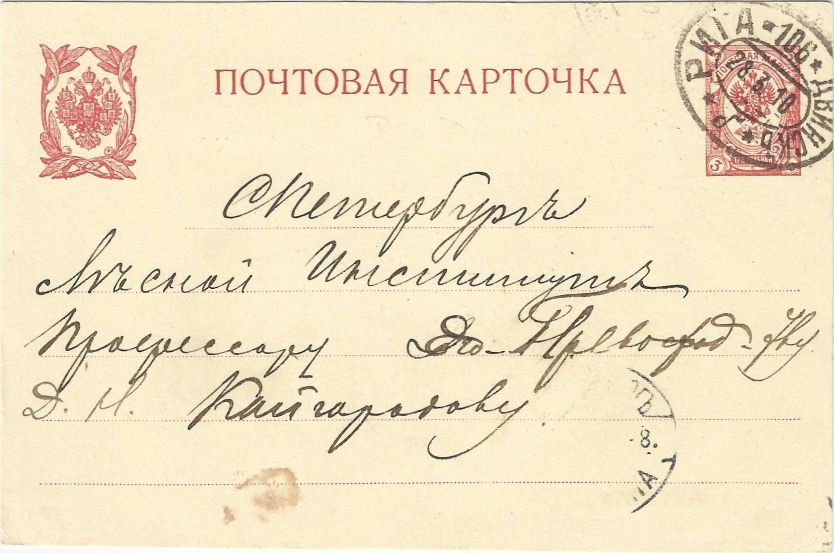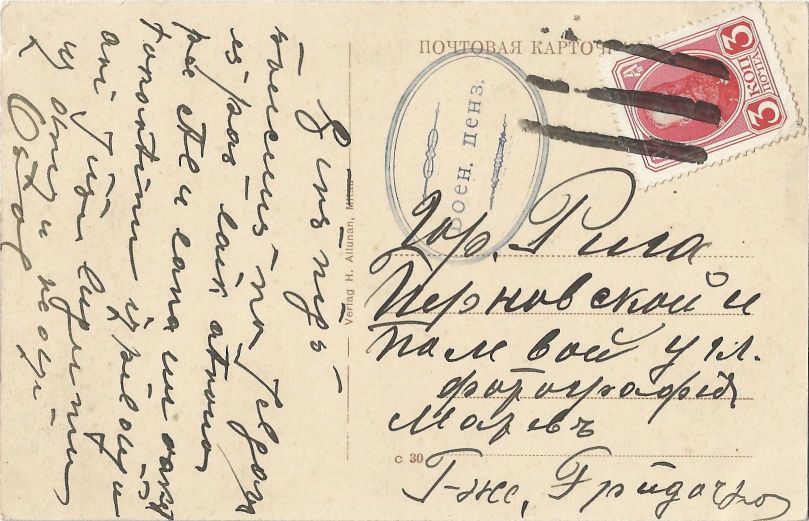Latvia
-
Courland, Semigallia, Latgale
-
Royal Swedish Post
-
Imperial Russian Post
During the Great Northern War (1700-1721), the Russian army finally conquered the Swedish Baltic provinces of Estonia and Livonia in 1710. When Russia took over sovereign rights, the Estates were promised, among other things, self-administration, the retention of the official German language and the practice of the Evangelical-Lutheran confession.
As the war progressed, Russia also gained naval supremacy in the northern Baltic. The Peace of Nystad in 1721 sealed the end of the Swedish trading empire and marked Russia's rise as a major European power.
In 1772 Latgalia (Polish Livonia) became part of Russia with the 1st Polish partition and became part of the Russian Baltic provinces.
In 1795, during the third partition of Poland, Courland also became part of Russia.
In 1918, the southern part of Livonia, the north-western part of the Vitebsk Governorate (the former Latgale) and the Governorate of Courland formed the territory of the independent Republic of Latvia.
Postal history
The pre-philatelic period in Russia ended in 1858 with the issue of the first stamps. The cultural autonomy of the country's German inhabitants was expressed postally, among other things, by the use of postmarks with German place names in German. In the course of the 19th century, these were gradually replaced by bilingual German/Russian postmarks. One such stamp is shown here. Towards the end of the 19th century, these postmarks were replaced entirely by purely Russian-language postmarks.
The first stamps from 1858 onwards were first cancelled with dashes, later with dot number stamps. There were six different shapes, e.g. circular for the governorate post offices and rectangular for the post offices in the district towns.
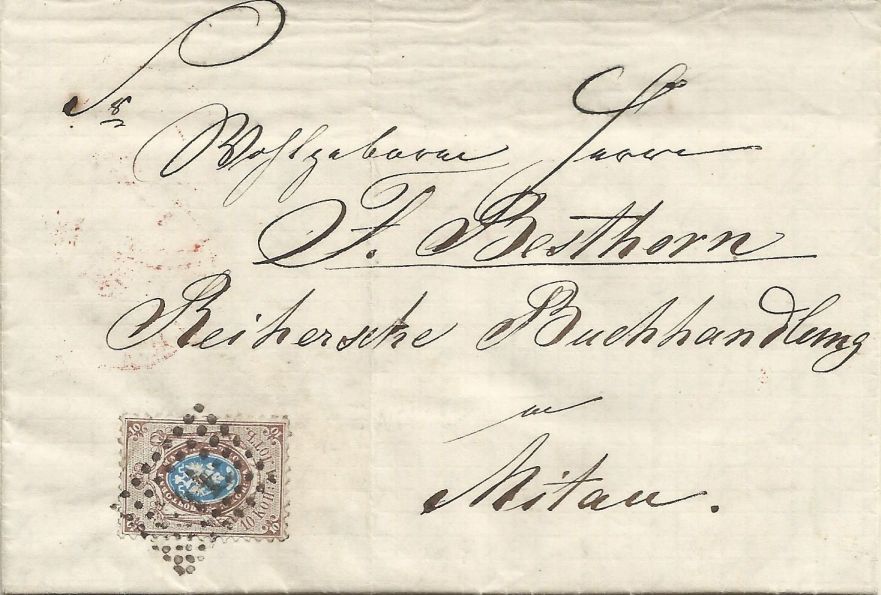
1862: Letter from DÜNABURG to MITAU. The stamp was cancelled with point number postmark "44" of the post office in Dünaburg.
Wenden District Post
Because the Imperial Reichspost only maintained the two post offices Wenden and Stockmannshof on the main routes in the district of Wenden, the Wendensche Kreispost (Wenden District Post Office), supported by the Livonian Knighthood, began its activities in 1862 to ensure postal services in the area.
If a postal item was to be transported within the district to the Imperial Post offices or from these to the post offices, an additional "Wendensche Kreis" stamp of 2 kopecks had to be used in addition to the Imperial Post stamps. These stamps were cancelled by means of a feather stroke.
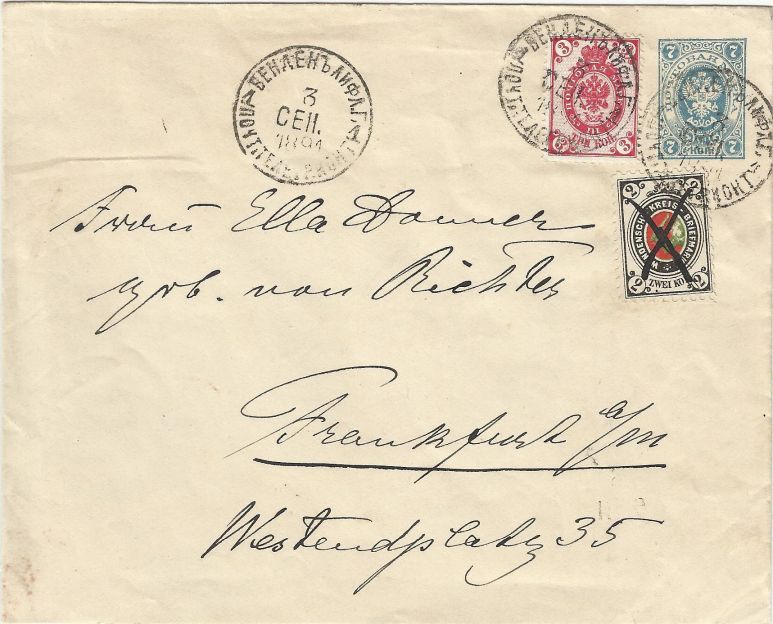
1891: Letter via the Russian post office in WENDEN to FRANKFURT AM MAIN. For carriage within the district, a "Wendensche Kreis-Briefmarke" (Wenden district stamp) of 2 kopecks was affixed and cancelled by feather stroke.
Literature
Vogel, Simone: The stamps of the Wendensche Kreispost 1862–1903 (see Monographs Latvia). Liederbach a.T. 2019.
Kleiner, Volker (Web archive): http:/www.philateria.com/html/wenden.html
Ringströms museum för filateli: http://www.ringphilmuseum.se/eng_lp_wenden.html
Postmarks
In 1860, Russia began to introduce standardised date-circle stamps. Because the design of these postmarks changed several times in the course of time, there are different types of them. In many postmarks, not only the place name was mentioned, but also the governorate.
In 19th century Russia, the Imperial Post Service and the Railway postal service were separate organisations. Railway post offices and moving post offices nevertheless processed letters and cards from the Imperial Post, which were processed and stamped with "railway postmarks" during the train journey.
The First World War (1914–1918) had far-reaching effects on the postal sector also: censorship measures of all kinds made civilian postal traffic more difficult and field post and prisoner-of-war mail created an extensive new field of activity for the Russian postal service until the territory of what later became the Republic of Latvia came under German occupation from 1915.
-
German Occupation / Ob. Ost
-
Independent Republic of Latvia
-
Soviet Occupation
-
German Occupation / Ostland / Courland
-
Camp Mail / Latvians in Exile
-
Independent Republic of Latvia (restored)
-
Private Mail in Latvia



